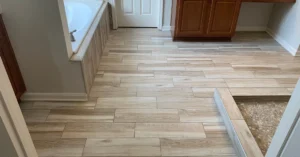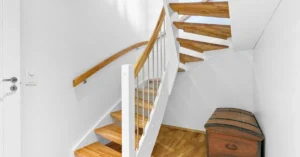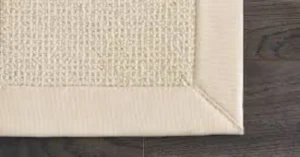Choosing to install new carpet in your home is an excellent way to enhance comfort, style, and warmth. However, the installation process can seem daunting if you’ve never tackled it before. Understanding the steps involved, the types of carpet, and what to expect from professional installers will help you make informed decisions and achieve the best results.
This article provides a comprehensive overview of residential carpet installation—from preparation to final touches.
Why Choose Carpet for Your Home?
Carpet offers many benefits for residential spaces:
- Comfort: Soft underfoot, perfect for bedrooms and living rooms.
- Insulation: Helps retain heat, improving energy efficiency.
- Sound Absorption: Reduces noise in busy households.
- Safety: Cushions falls, ideal for children and elderly.
- Style Variety: Available in endless colors, textures, and patterns.
Types of Residential Carpet
Before installation, choosing the right carpet type is essential. Common options include:
- Cut Pile: Soft and plush, with fibers cut at the ends (e.g., Saxony, Frieze).
- Loop Pile: Durable and low-maintenance, fibers are looped (e.g., Berber).
- Cut and Loop: Combines both for textured patterns.
- Materials: Nylon (durable), polyester (soft, stain-resistant), wool (luxury, natural), olefin (budget-friendly).
Preparing for Carpet Installation
Proper preparation ensures a smooth installation process:
- Clear the Rooms: Remove all furniture, appliances, and décor.
- Remove Old Flooring: Carpet installers often handle removing old carpet and padding.
- Inspect the Subfloor: Must be clean, dry, and even. Any damage should be repaired beforehand.
- Measure Accurately: Professional installers will measure the area to calculate how much carpet and padding are needed.
The Residential Carpet Installation Process
1. Acclimate the Carpet
- Carpet rolls are typically left in the room for 24-48 hours before installation to adjust to the room’s temperature and humidity, preventing expansion or contraction later.
2. Install the Padding
- Padding is placed first to add cushioning and extend carpet life.
- It is secured to the subfloor using staples or adhesive.
- Different types of padding are available depending on comfort and durability preferences.
3. Cut and Fit the Carpet
- Installers unroll the carpet and cut it to size, leaving extra material for trimming.
- Carpet is positioned and stretched to remove wrinkles and ensure a tight fit.
4. Seam Joining
- If the carpet requires multiple pieces, seams are joined using special tape and a seaming iron.
- Professional seam work ensures seams are strong and barely visible.
5. Stretching the Carpet
- A power stretcher or knee kicker is used to stretch the carpet and secure it on tack strips along the edges.
- Stretching prevents future wrinkles, buckling, or bubbling.
6. Trimming and Finishing
- Excess carpet is trimmed along walls and corners.
- Carpet edges are tucked neatly around baseboards and doorways.
- The installer cleans up the workspace.
How Long Does Carpet Installation Take?
- For an average-sized room (12×15 ft), installation usually takes 2-4 hours.
- Larger homes or multiple rooms may take a day or more.
- Allow extra time for removal of old carpet or subfloor repairs.
Cost Factors for Residential Carpet Installation
Several variables influence the total cost:
- Carpet Quality: Higher-grade carpets cost more.
- Padding Type: Thicker, premium padding adds to price.
- Room Size and Shape: Irregular shapes require more cutting and seaming.
- Removal of Old Flooring: Adds labor cost.
- Additional Services: Furniture moving, subfloor repairs, or stairs installation.
Tips for a Successful Carpet Installation
- Choose a reputable installer: Check reviews and ask for references.
- Communicate your preferences: Tell installers about high-traffic areas or pets.
- Plan furniture placement: Leave enough time to move furniture back properly.
- Inspect the work: Check seams, edges, and overall fit before paying.
Maintaining Your New Carpet
- Vacuum regularly to prevent dirt buildup.
- Address spills promptly to avoid stains.
- Schedule professional cleaning every 12-18 months.
- Use furniture pads to prevent indentations.
Conclusion
Residential carpet installation is an investment in your home’s comfort and style. By understanding the process and choosing the right materials, you can ensure a smooth installation and long-lasting results. Whether you DIY or hire professionals, preparation and knowledge are key to success.
Ready to transform your home with beautiful new carpet? Start by selecting the perfect style and reach out to trusted installers near you!





